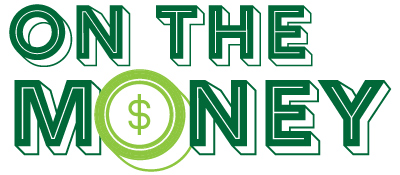It’s often said that no one works in public media for the money. But that doesn’t mean the money doesn’t matter.
Pay equity and transparency around salaries have increasingly become topics of conversation throughout public media. To help inform those conversations, this spring Current conducted its first-ever survey of public media salaries. Now, we’re ready to share the results.
We fielded our survey from March 24 to April 26, seeking responses from full-time employees working for public media stations, networks and national organizations. We ended up with 1,909 responses that met those criteria and were complete enough to use. According to CPB, public TV and radio stations employed 14,712 full-time employees in 2020. That doesn’t include people at networks and national organizations. So we got responses from somewhat less than 13% of the system’s workers.
That’s the first caveat to keep in mind: Our data reflects only a slice of the system. In addition, it’s a self-selecting sample and not necessarily representative of the whole. Among our sample, 81% of respondents were white. According to CPB data, 75.3% of public media stations’ full- and part-time employees in 2020 were white. Our sample — which, remember, also includes non–station employees — skewed more female: 61%, compared to 50% in CPB’s data.
Given those limitations, here are some of our key findings.
First, a breakdown of all median salaries by job type. Note the gap that sets apart leaders and VP/chief officer positions. Among the lowest-paid categories are several journalism roles: data journalist, reporter and photo journalist.
Here are a few breakdowns based on demographics. You might notice a racial breakdown isn’t included here. That’s because we didn’t find any particularly meaningful trends when we looked at respondents’ salaries by race.
But when looking along gender lines, we saw a gap in compensation between males and females. The median salary among men was 9.6% higher than among women. (1.1% of respondents classified themselves as “non-binary/third gender”; 0.9% declined to provide their gender; and 0.1% responded “Prefer to self-describe.”)
That gap widens significantly, to 16%, among leaders of organizations, VPs and C-suite roles. That disparity is roughly on par with our 2015 review of compensation among organizational leaders in top markets, which found that women were earning on average 83 cents for every dollar their male peers earned.
Looking at median salary by age, that 70+ category really jumps out. If you’re thinking about retiring, maybe don’t just yet? However, only five of our respondents were over 70. Also note the falloff in median salaries among the under-40 set.
We asked survey respondents to tell us what kind of licensee and organization they worked for. These are the median salaries by organization type. You might expect salaries at national networks and organizations to be higher …
… yet an analysis of executive salaries by organization type finds the highest median salary among joint licensees, not national organizations. There’s also a larger gap between radio and TV executives as compared to all employees.
What about salaries by licensee type? The median figures are fairly close, though salaries at university licensees lag a bit more.
We wondered whether that lower median salary at university licensees could be due at least in part to where such stations are located. Indeed, the university licensees in our sample are in cities with lower cost-of-living indices. Yet the state licensees’ median cost of living is even lower, whereas those salaries are not. (We used cost of living data from AdvisorSmith for our comparisons.)
Finally, we wanted to examine how salaries correlate with union membership. Issues of pay equity have been among the reasons that public media employees are increasingly seeking union representation. Does belonging to a union have an impact? At first glance, the answer appears to be “yes.”
Among our respondents, 10.2% said they belong to a union. Newsrooms have often led unionization efforts, and 19.2% of news employees said they belong to unions. The gap between union and nonunion news salaries is even larger.
Again, though, could the location of organizations be a factor? Many public media organizations with unionized employees are located in larger markets. A cost-of-living analysis suggests that location may indeed be a factor, so that should be taken into account when considering the higher union salaries.
Do you have additional questions about our survey’s findings? Check out our interactive database, and if there’s anything else you want to know, email us and we’ll do our best to find the answer.
Thanks to Eric R. Schuler, quantitative/computational research methodologist with American University, who advised us on designing and fielding the survey.
"first" - Google News
July 23, 2021 at 01:19AM
https://ift.tt/3eM9xYB
Current's first-ever pubmedia salary survey finds age and gender gaps, higher union wages - Current
"first" - Google News
https://ift.tt/2QqCv4E
https://ift.tt/3bWWEYd
Bagikan Berita Ini















0 Response to "Current's first-ever pubmedia salary survey finds age and gender gaps, higher union wages - Current"
Post a Comment